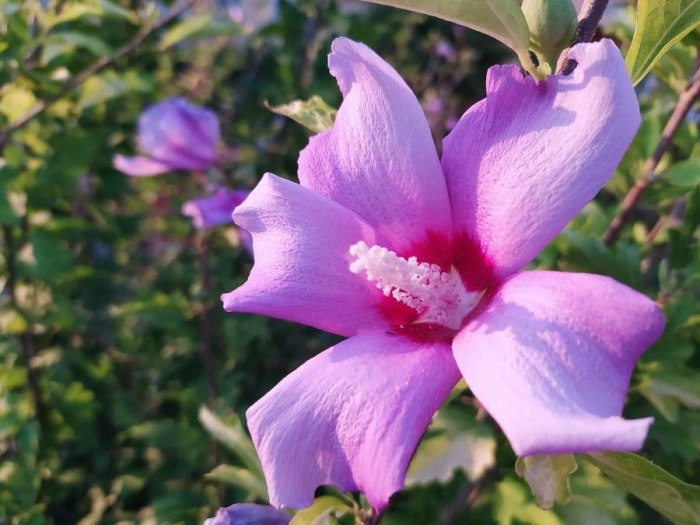Rose Of Sharon
(Hibiscus syriacus)
Rose Of Sharon (Hibiscus syriacus)
/
/

vituper
CC BY-SA 4.0








































































































Estimated Native Range
Summary
Rose of Sharon is valued for its prolonged and prolific summer blooming period, making it a favorite for ornamental use in gardens. It is often used for hedges, mixed borders, or as a stand-alone specimen. This shrub is remarkably adaptable, tolerating a range of soil types—sand, clay, chalk, and loam—as long as they are moist but well-drained. It is also resistant to air pollution, heat, humidity, poor soil, and drought, making it suitable for urban environments. While it can be somewhat invasive due to its seeding habit, proper management and selection of sterile cultivars can mitigate this issue. Cultivation requires full sun to part shade and moderate watering, with the plant being able to withstand frost, drought, and urban pollution.CC BY-SA 4.0
Plant Description
- Plant Type: Shrub
- Height: 8-12 feet
- Width: 6-10 feet
- Growth Rate: Moderate
- Flower Color: Pink, Purple, White
- Flowering Season: Summer, Fall
- Leaf Retention: Deciduous
Growth Requirements
- Sun: Full Sun, Part Shade
- Water: Medium
- Drainage: Fast, Medium, Slow
Common Uses
Bank Stabilization, Bee Garden, Bird Garden, Border Plant, Butterfly Garden, Deer Resistant, Drought Tolerant, Edible*Disclaimer: Easyscape's listed plant edibility is for informational use. Always verify the safety and proper identification of any plant before consumption., Hedges, Hummingbird Garden, Potted Plant, Rabbit Resistant, Salt Tolerant, Showy Flowers, Street Planting
Natural Habitat
East Asia, particularly China and Korea, thriving in open woodlands and along forest edges
Other Names
Common Names: Althea , Shrub Althea , Syrian Ketmia , Rose Mallow , 木槿 , Rose-Of-Sharon
Scientific Names: Hibiscus syriacus , Althaea frutex , Hibiscus chinensis , Hibiscus syriacus f. albus-plenus , Hibiscus syriacus f. totus-albus , Hibiscus syriacus f. violaceus , Hibiscus syriacus f. elegantissimus , Hibiscus syriacus f. amplissimus , Hibiscus syriacus f. grandiflorus , Hibiscus syriacus f. paeoniflorus
GBIF Accepted Name: Hibiscus syriacus L.